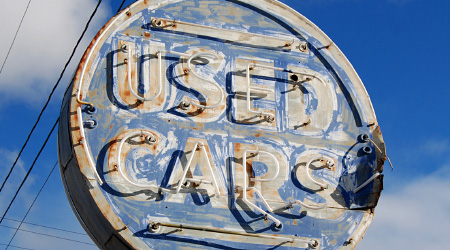How To Buy A Used Car

Buying a used car can be just as worthwhile as buying a new car if you know to look for and protect yourself and your money. There are numerous online resources available to check the price and quality of a used car to ensure you are actually getting the solid and reliable deal you're hoping for. As long as you know the basics of what to look for there shouldn't be any problems. Below are a list of areas and suggestions to keep an eye on when looking to purchase a used vehicle.
Test Drive
It cannot be emphasized enough how important a test drive is since it will provide first-hand information which would otherwise be unavailable. Be sure to take it both on city streets and the freeway as different issues may crop up at different speeds. City driving allows you to test stop and go traffic which focuses on breaking and acceleration as well as making left and right turns. This can highlight issues with squeaking or spongy brakes and cracked axles which will have a distinctive clicking sound. Also, drive it for an extended period of time to make sure it doesn't overheat when going through multiple red lights or stop signs. This will let you check to see if the transmission slips or has problems changing gears. Freeway driving allows you to listen for noise levels and vibrations. Some severe structural defects may only present themselves at freeway speeds which could pose a safety concern.
Check Everything
The second important area is mechanical performance which will require your own visual and auditory inspection. Do all the normal checks as if it were your own car by looking under the hood and examining the air filter, oil level, spark plugs, seals, transmission fluid level, brake fluid level and anything else that seems out of sorts. Once done with the engine, check the tires for tread depth and wearing as well as tire pressure level. Look under the car for signs of damage from rocks or aggressive driving. Verify that a spare tire and jack are available in the trunk and all pieces are in working order. On the interior of the car, check the electrical system by working with the lights, stereo, signals, brakes and turn the engine over multiple times to make sure it starts without any issues.
Second Opinion
If up to this point you are satisfied with both the test drive and your visual inspection then it's time to get serious. The odds are high that unless a significant problem crops up that you'll wind up purchasing the vehicle. At this point it's worthwhile to invest $100 or so by taking the vehicle to a certified mechanic of your choosing to have a second opinion done. This is an important step because even though consumers can be very thorough they still may miss severe problems if they don't know what to look for. A trained mechanic can put the car on a lift as well as hook it up to a diagnostic machine and give a more in-depth analysis of any potential issues. Make sure the mechanic notes everything on the bill so you can use this as a negotiation tactic if you still want to buy a used car. Whether from a third-party or a dealer, always use your own mechanic and either have the price lowered or make sure all problems are resolved prior to paying.
Clean Title
Finally, once everything has been resolved to your satisfaction and you're looking to finalize buying a used car make sure the title is free and clear. Use the Vehicle Identification Number, the VIN, to run a title check and verify that there are no liens or other issues with the title. Sometimes, where deals are too good to be true, stolen vehicles have VINs from other vehicles. Obviously if you look up a VIN for what is supposed to be a BMW 330i and it comes back a Toyota Corolla then that would be a red flag.
Summary
It is actually a simple process to buy a used car, just be sure to be thorough and ask questions to make sure you're protected. Get a second opinion from a mechanic and test drive the vehicle more than once if necessary until you're at a high comfort level. If work is being done to repair defects make sure they are under warranty for a minimum of 90 days so the seller must repair these items if they fail once you've purchased the car. If at any point you are uncomfortable or not sure then walk away. There are millions of used cars at any given time so be patient and buy the used car that's right for you.







